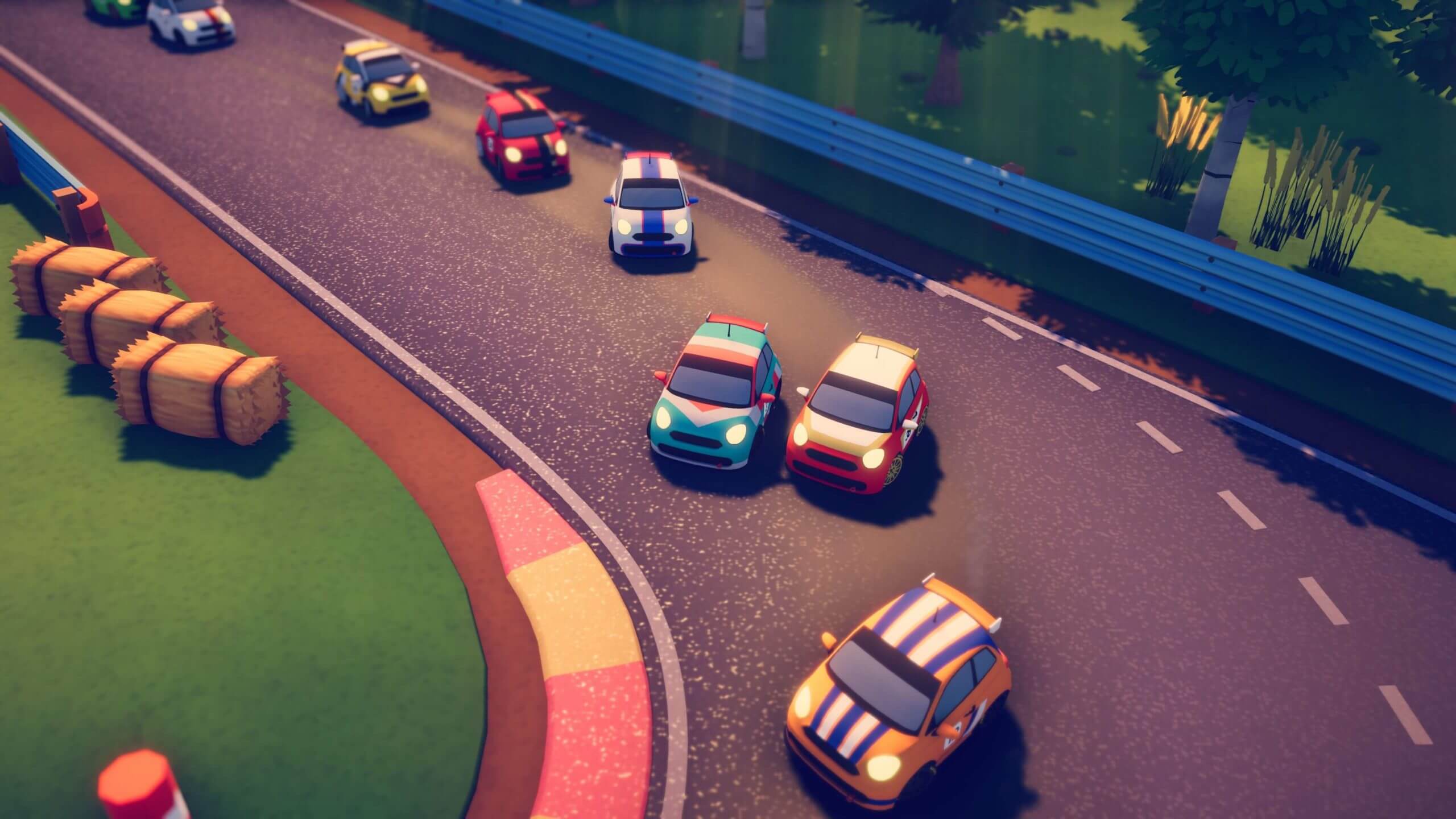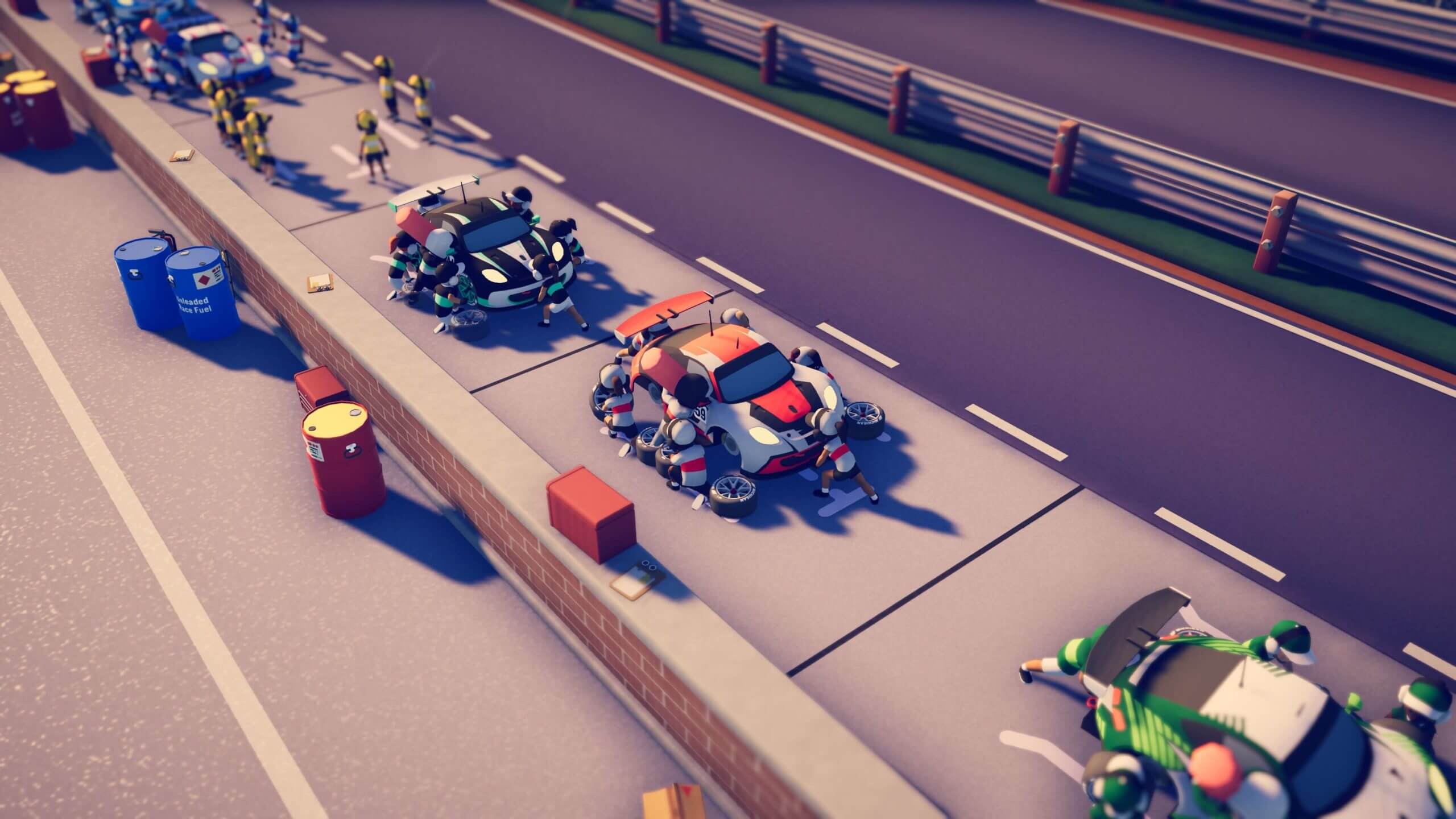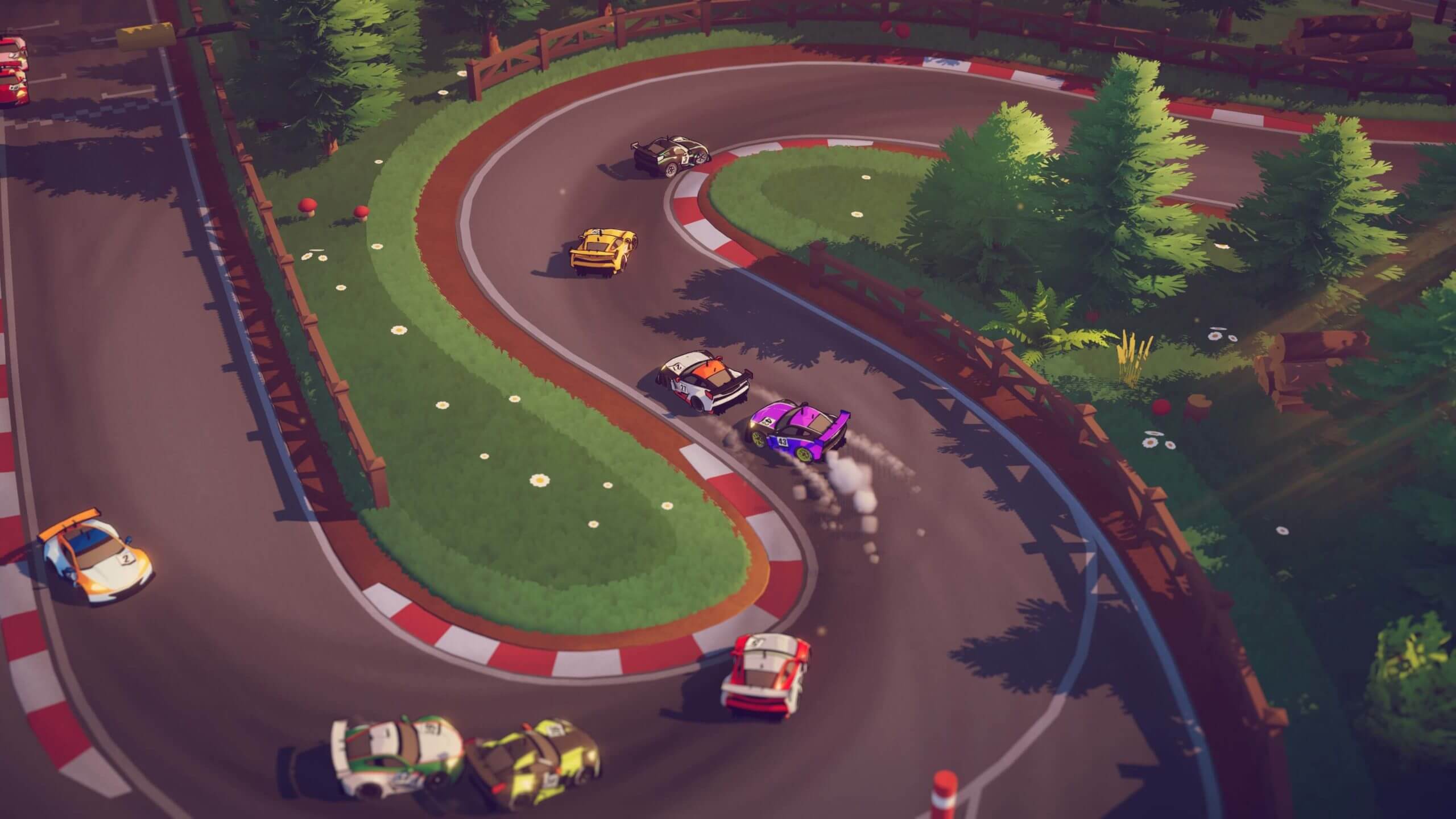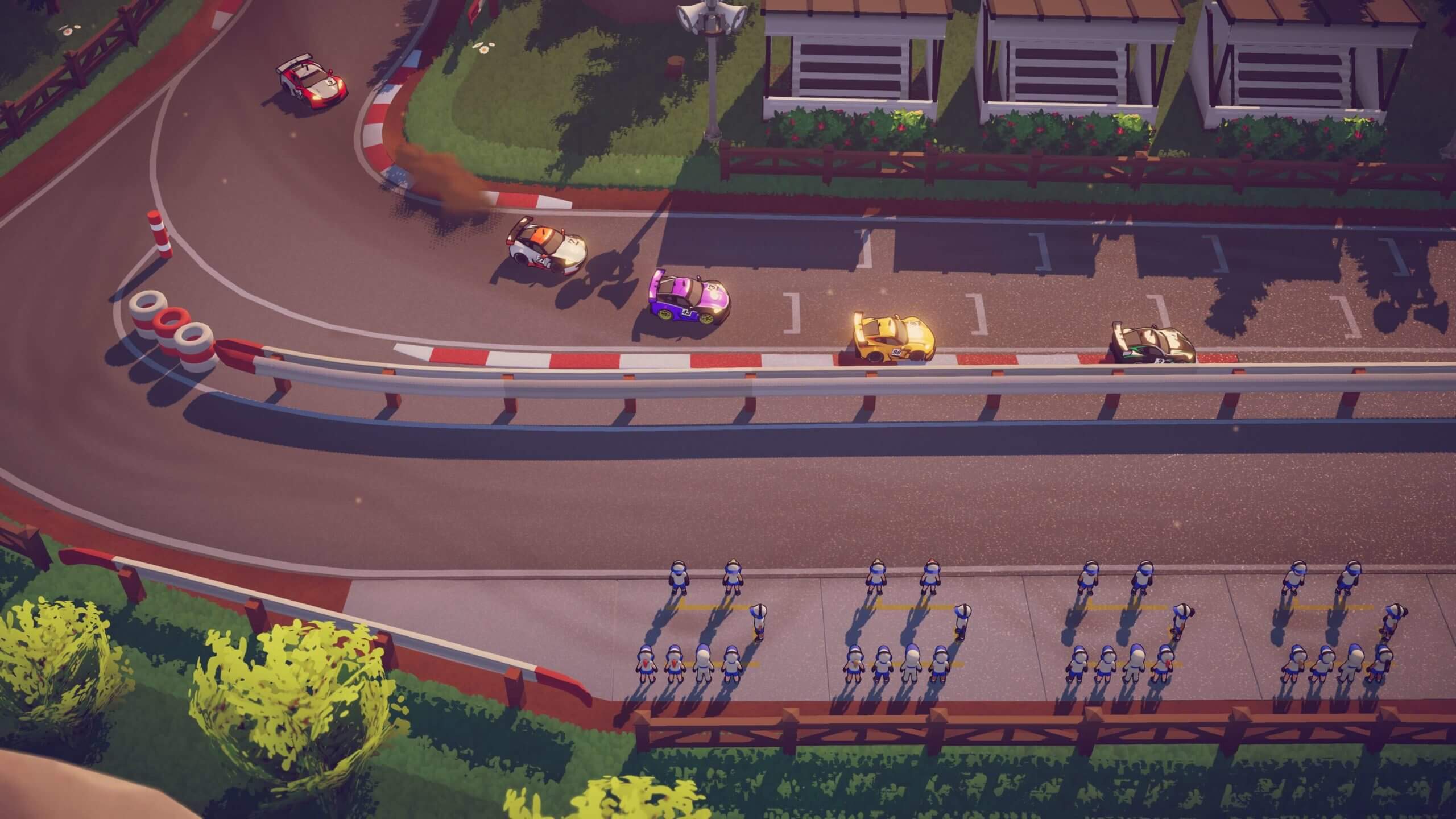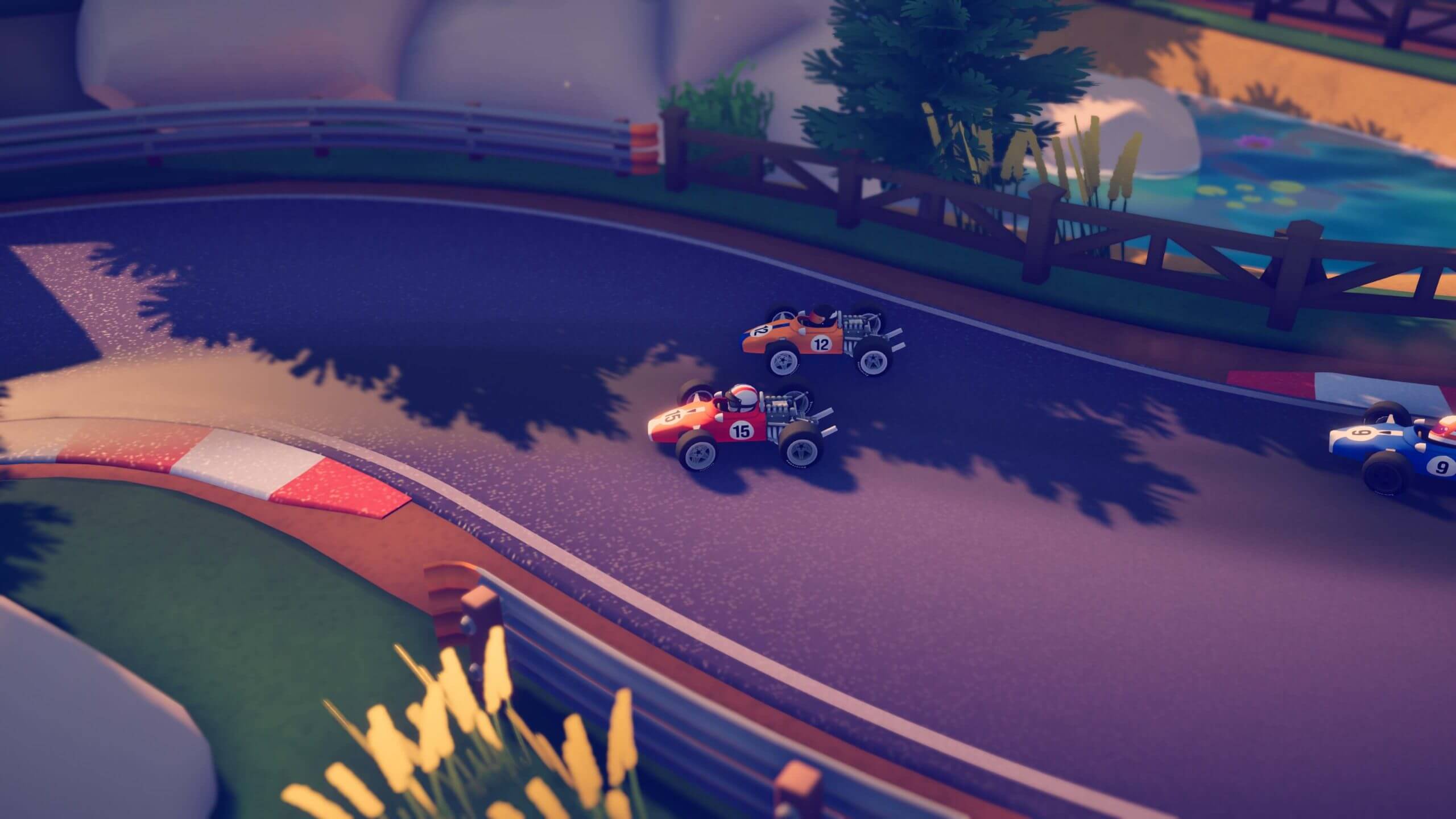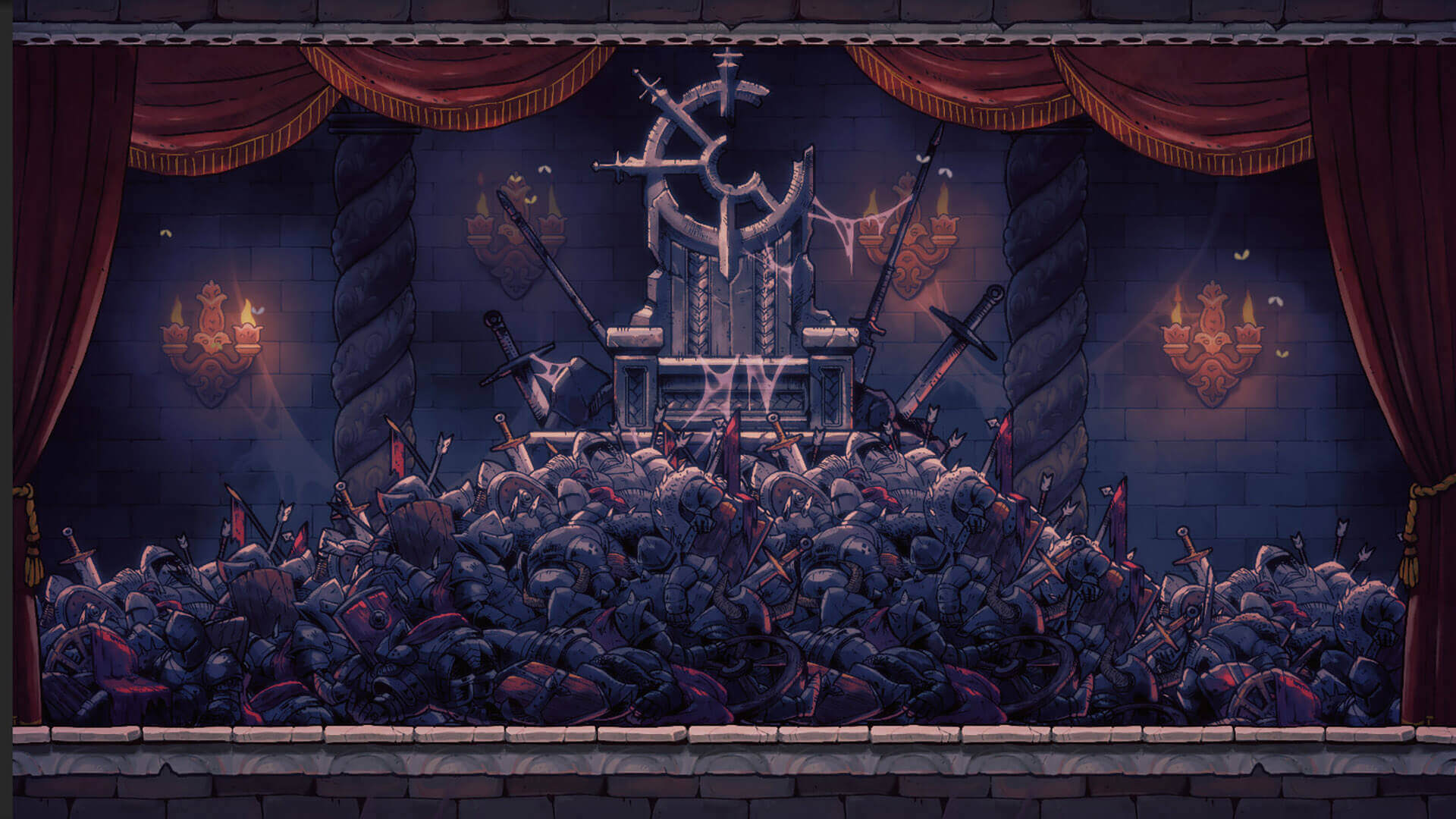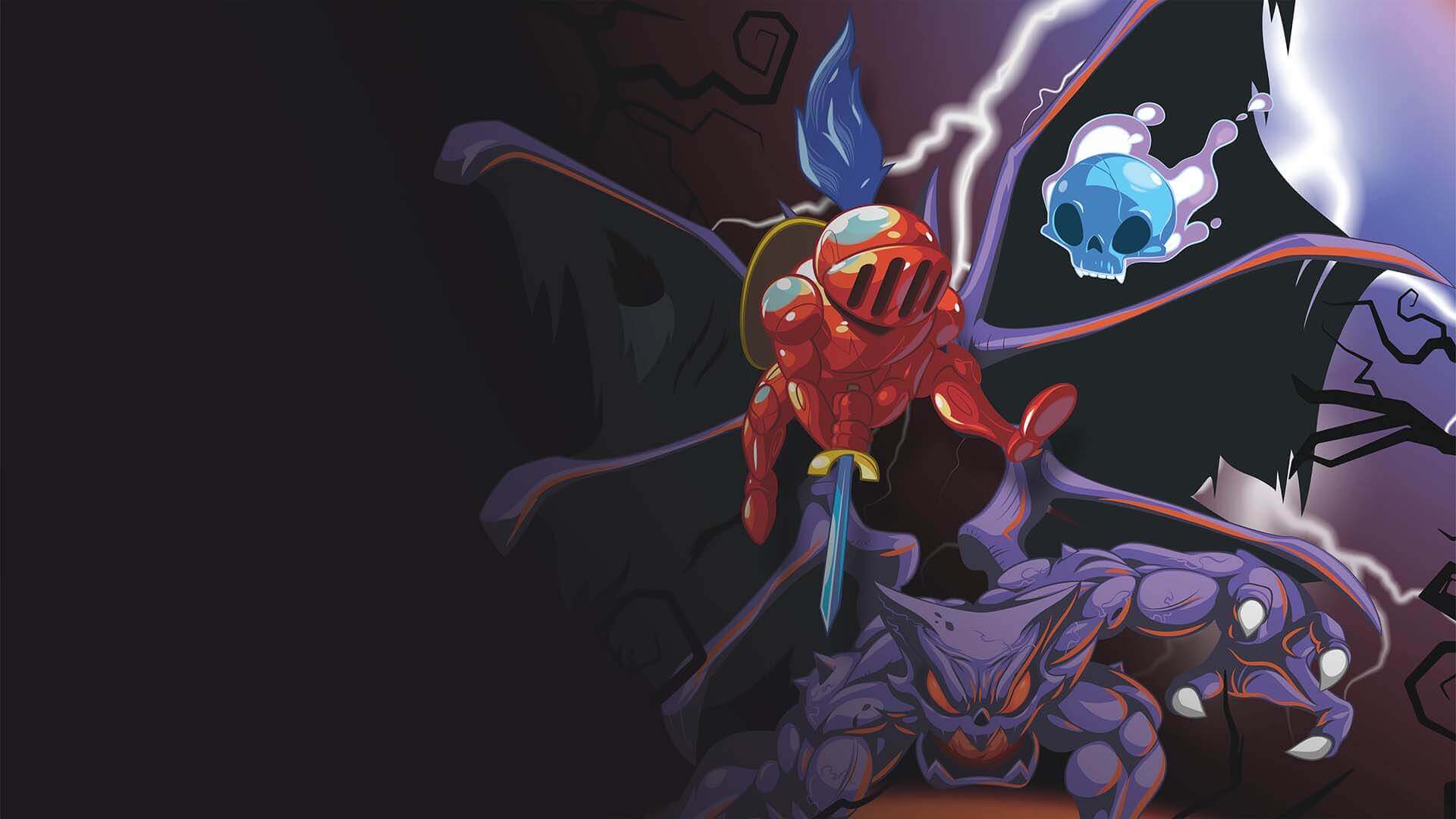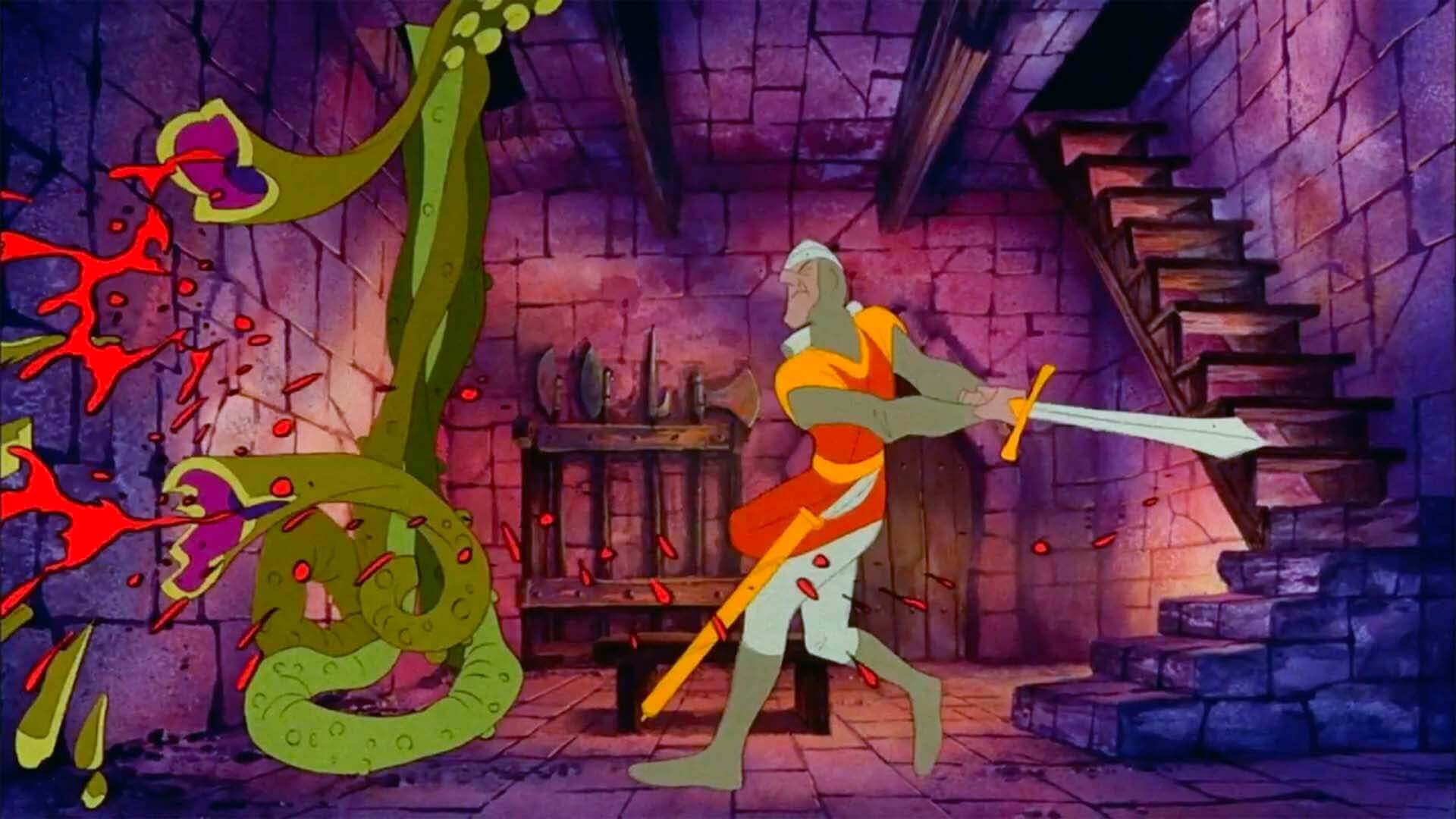February 24, 2022 — It is far from guaranteed that those unfamiliar with the top-down racing genre will enjoy Original Fire Games’ Circuit Superstars right out of the gate. Although the premise and overall structure are about as simple and approachable as they come, the racing mechanics require a learning curve that may prove too steep. Stick with it though, and you may end up surprised over just how rewarding the game can be with practice.
Although Circuit Superstars probably won’t rock anyone’s world, it is nonetheless well-worth checking out if you’re looking for a pure, no-nonsense racing experience. The title is a retro racing game developed by Canadian outfit Original Fire Games and published by Square Enix Collective. A Windows early access version was launched on Steam on March 5, 2021, and released in full on Xbox One and Windows on October 12, 2021. A new version was published on PlayStation 4 on January 27, 2022, hence this review.
“Outside of its surprisingly rewarding gameplay loop, Circuit Superstars feels remarkably refreshing in its simplicity.”
The newly released PlayStation 4 version supports cross-play over PC (via Steam®) and Xbox and provides racing fans with 12 vehicles, 19 tracks available, and 13 locations. The developer has also let us know that a Nintendo Switch version is coming out soon, with May 2022 looking to be a likely release window.
A Major Hurdle to Overcome
Pausing the game during any given race will immediately treat you to Circuit Superstars’ seemingly dead-simple control scheme. You can accelerate, steer, brake, and reposition yourself if you lose control of your car, and that’s pretty much it. Sounds easy, right? But as soon you start actually controlling your vehicle, you’ll likely run into quite a few headaches as you try and wrap your head around the mechanics.
Much like with any other racing game, an important part of mastering Circuit Superstars involves knowing how to appropriately navigate turns. Since the game lacks a dedicated drift button, players are expected to clear sharp turns by braking and letting go of the accelerator at the right times. But choosing whether to brake or to let go of the accelerator is crucial, as each action affects the player’s turning radius in its own way. Additionally, players can decide to enter a quasi-drift state by holding both the accelerator and the brake button at once, and they can also opt to navigate specific turns at full speed.
All these options, while seemingly minor on the surface, help keep players’ on the edge on a near-constant basis, as just about every turn can potentially punish players heavily if they make the wrong decision. Vehicles in Circuit Superstars are heavily affected by physics, so crashing into a wall or attempting a sharp turn on a patch of grass can lead to some serious wipeouts. Skipping over patches of grass or hugging the walls to reorient yourself will inflict a speed penalty that, while brief, can easily mean the difference between victory and defeat. Moreover, the AI racers in the single-player modes are, for the most part, fairly adept at navigating turns even on the lower difficulty settings, so failing to efficiently optimize your turns can cost you more than you might think.
Crushing the Competition
These punishments can make the process of learning Circuit Superstars almost comically frustrating, but the sense of reward that comes with finally nailing the varying track layouts is palpable. It may be tough to catch up to some of the AI racers upon making a mistake, but any frustrations are tempered by the knowledge that every racer operates under the same rules as you do. The primary factor that decides the outcome in any race is your hard-earned skill, which makes every victory feel all the more earned.
This rewarding feeling is only accentuated once the game starts introducing more difficult criteria. Most races are straightforward 5-lap affairs, but Circuit Superstars also features an alternative race type in which your vehicle’s body, gas, and tires degrade. This means players will inevitably have to arrive at a pit stop at least once per race, especially since these challenging races tend to have more laps in Grand Prix mode. It’s a seemingly daunting challenge at first, but it’s one that shakes up the formula in all the right ways. Choosing when you can afford to go to the pit stop can be a nail-biting split-second decision to make, which makes it feel all the more triumphant when that decision pays off.
Worn-Out Tires
The core racing mechanics and vehicle handling are absolutely worthy of praise, but the whole package, at least from a single-player perspective, suffers from one main problem — and it’s unfortunately a big one. Even after only a few Grand Prix cups, the experience can become quite repetitive, especially after hours of play.
This can be best observed with how the Grand Prix cups pace out the game’s tracks. For the most part, each cup introduces about one new track on average, and since each cup contains four tracks, players will be looping through the same courses over and over again. Occasionally, a cup will introduce a new variant of an older track to spice things up, but this does little to alleviate the lack of visual and gameplay variety. The one main feature that separates one cup from another is the vehicle you control, but the handling of each is rarely significant enough to matter in the long run.
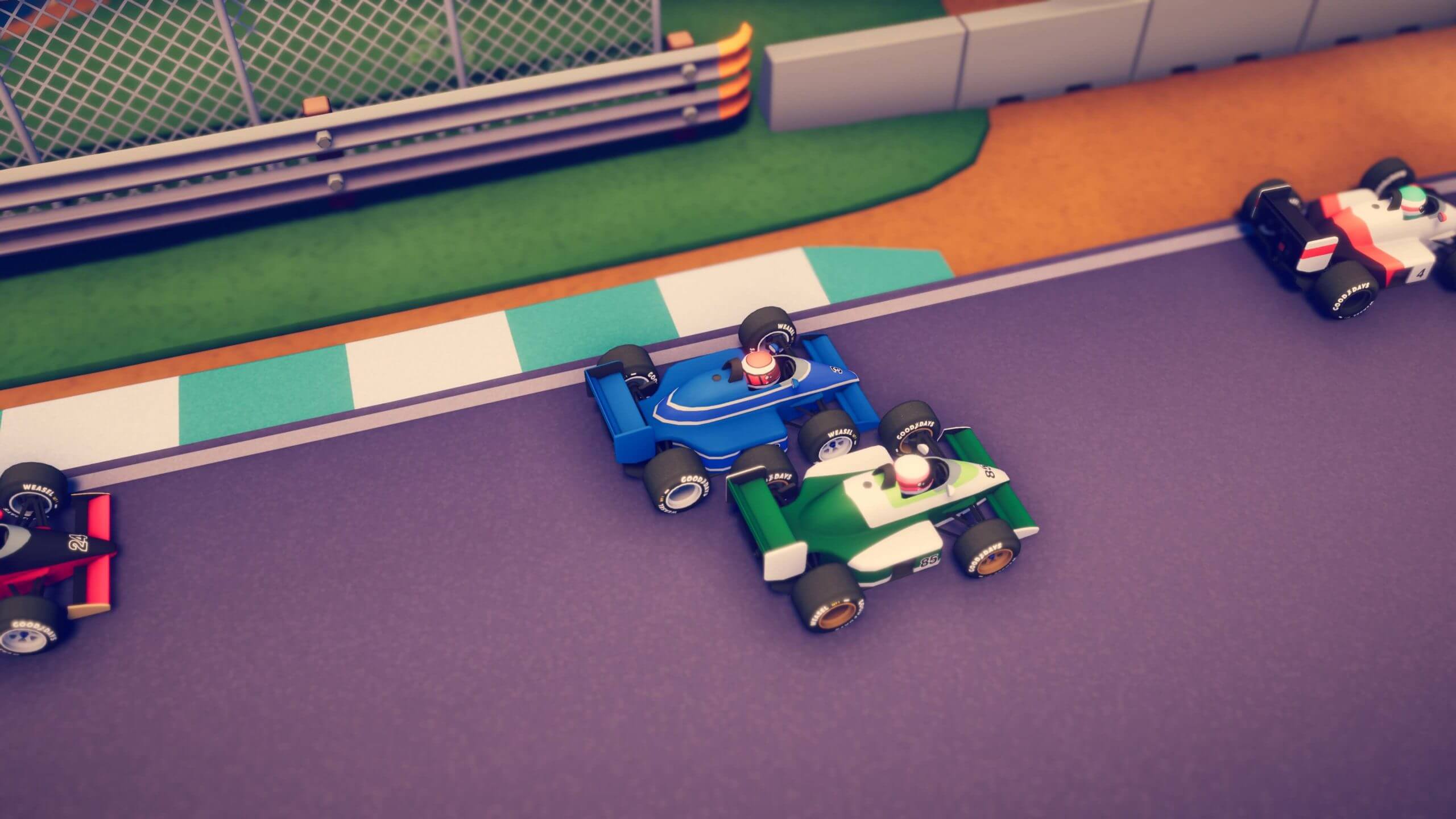
And for as enjoyable as the “vehicle degradation” races can be, they tend to overstay their welcome in the Grand Prix mode. As mentioned before, races with the degradation ruleset tend to feature more laps, but the real offender comes in the form of the qualifier rounds. Before officially competing on each track, players have to complete at least two laps of the same track so that the game can determine each vehicle’s position at the start of a race.
“The clean, beautiful, and minimalist visuals coupled with straightforward yet effective track designs make for a solid game that’s easy to just sit down and play after a long day.”
So even though the Grand Prix cup selection menu screen may state that each race contains eight laps, the reality is players have to go through ten laps per track, with an extra loading screen after the first two. The qualifier rounds ultimately feel like needless extra steps that pad out an already lengthy Grand Prix cup. By the time I’m finished with the cup, I end up exhausted without wanting to go back for more, and that’s not an ideal feeling to have after only a handful of races in what is supposed to be an addictive, replayable retro racer.
SCORE
7
OUT OF 10
THE GOOD STUFF
- Boasts a deceptively difficult yet rewarding control scheme with almost zero technical issues.
- “Vehicle degradation” races add a fun, challenging twist to the formula.
- Simple, clean visuals give off an overall comfy vibe.
CONCERNS
- Grand Prix mode is poorly paced.
- Different vehicles fail to make cups feel distinct.
- Qualifier rounds pad out the “vehicle degradation” cups to an excessive degree.
Conclusive Thoughts
Even with these unfortunate downsides, Circuit Superstars is still an impressive little game in its own right. Outside of its surprisingly rewarding gameplay loop, it feels remarkably refreshing in its simplicity. The clean, beautiful, and minimalist visuals coupled with straightforward yet effective track designs make for a game that’s easy to just sit down and play after a long day. Additionally, there are no technical issues that get in the way of the experience, which is a testament to the immense talent of the development team. This alone brings Circuit Superstars over the finish line in a positive manner, even if it’s not by a commanding lead.

